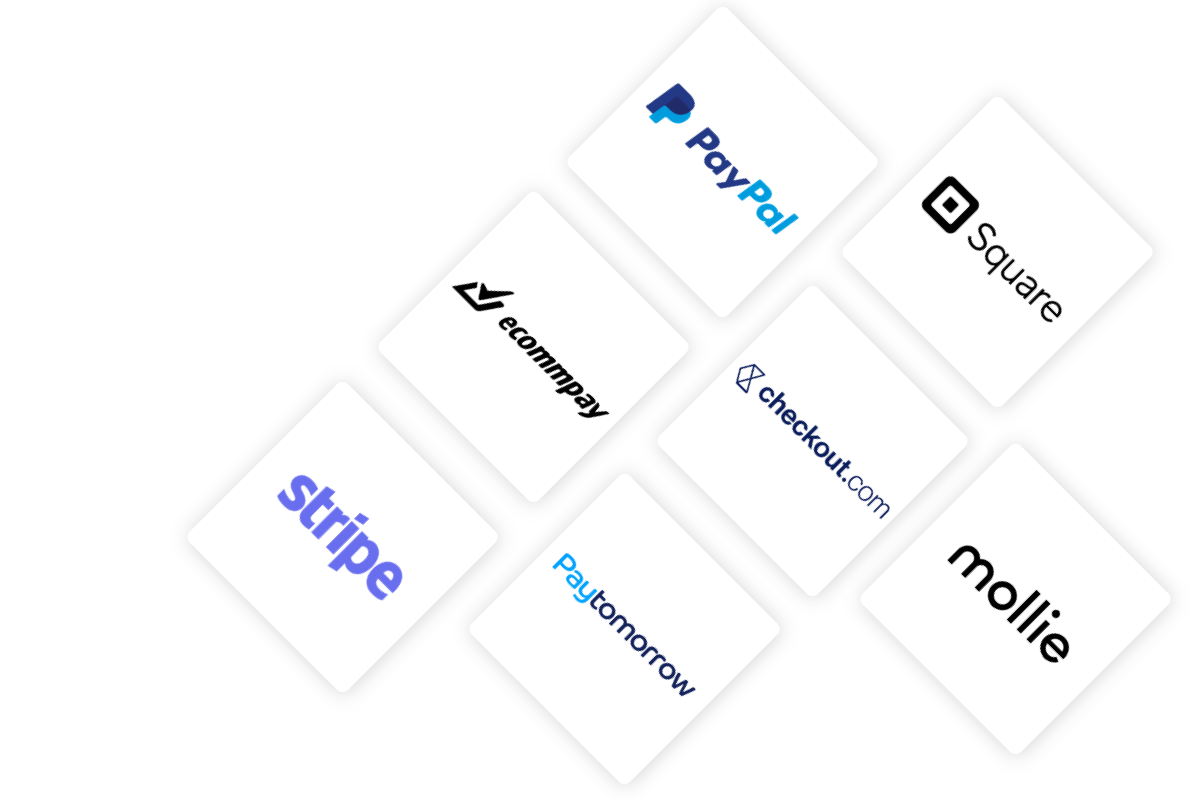Our Payment Links are different
Use your Payment Gateway
Use Multiple Payment Gateways/Methods
Not tied to any product, invoice or amount

Pre-authorize, capture payment or save a card
Secure and Streamlined: The Benefits of Using Payment Links for Card Authorization
Introduction: What are Payment Links for Card Authorization?
Payment links for card authorization are a secure and convenient way for businesses to collect payments from their customers. These links allow businesses to send a unique URL to their customers, which directs them to a payment page where they can enter their card details and authorize the payment. This method eliminates the need for businesses to manually process card payments, reducing the risk of human error and increasing efficiency.
Payment links work by generating a unique URL for each transaction. When a business wants to collect payment from a customer, they simply generate a payment link and send it to the customer via email, SMS, or any other communication channel. The customer then clicks on the link, which takes them to a secure payment page where they can enter their card details and authorize the payment. Once the payment is authorized, the funds are transferred to the business’s account.
The Benefits of Using Payment Links for Card Authorization
a) Increased security:
One of the key benefits of using payment links for card authorization is increased security. By directing customers to a secure payment page, businesses can ensure that their customers’ card details are protected. Payment links use encryption technology to securely transmit card information, reducing the risk of data breaches and fraud.
b) Streamlined payment processes:
Payment links also streamline the payment process for businesses. Instead of manually processing card payments, businesses can simply generate a payment link and send it to their customers. This eliminates the need for manual data entry and reduces the risk of human error. Additionally, payment links can be integrated with existing systems, such as accounting software or customer relationship management (CRM) systems, further streamlining the payment process.
c) Simplified payment collection:
Payment links simplify the process of collecting payments from customers. Instead of sending invoices and waiting for customers to make a payment, businesses can send a payment link directly to their customers. This makes it easier for customers to make payments, as they can simply click on the link and authorize the payment. It also reduces the risk of late or missed payments, as customers can make payments immediately.
Increased Security with Payment Links
a) How payment links reduce the risk of fraud:
Payment links reduce the risk of fraud by directing customers to a secure payment page. This page is encrypted, meaning that any card information entered by the customer is protected. Additionally, payment links can be set to expire after a certain period of time, further reducing the risk of unauthorized access to the payment page.
b) The importance of secure payment processing:
Secure payment processing is crucial for businesses and customers alike. Businesses need to protect their customers’ card details to maintain trust and avoid legal and financial consequences. Customers, on the other hand, want to ensure that their card details are not compromised when making online payments. Payment links provide a secure method of processing card payments, giving both businesses and customers peace of mind.
Streamlined Payment Processes with Payment Links
a) How payment links simplify payment processing:
Payment links simplify payment processing by eliminating the need for manual data entry. Instead of manually entering card details into a payment terminal or online form, customers can simply click on a payment link and authorize the payment. This saves time and reduces the risk of errors.
b) The benefits of automation:
Payment links can be integrated with existing systems, such as accounting software or CRM systems, allowing for automation of the payment process. This means that businesses can automatically generate payment links and send them to customers based on predefined triggers, such as when an invoice is due. Automation reduces the need for manual intervention and increases efficiency.
How Payment Links Simplify Payment Collection
a) The convenience of payment links for customers:
Payment links make it convenient for customers to make payments. Instead of having to manually enter their card details or write a check, customers can simply click on a payment link and authorize the payment. This saves time and effort, making the payment process more convenient for customers.
b) The benefits of recurring payments:
Payment links can also be used for recurring payments, such as monthly subscriptions or membership fees. By setting up a recurring payment link, businesses can automatically collect payments from customers on a regular basis. This eliminates the need for customers to remember to make a payment each month and reduces the risk of late or missed payments.
Payment Links and Fraud Prevention
a) How payment links reduce the risk of fraud:
Payment links reduce the risk of fraud by directing customers to a secure payment page. This page is encrypted, meaning that any card information entered by the customer is protected. Additionally, payment links can be set to expire after a certain period of time, further reducing the risk of unauthorized access to the payment page.
b) The importance of secure payment processing:
Secure payment processing is crucial for businesses and customers alike. Businesses need to protect their customers’ card details to maintain trust and avoid legal and financial consequences. Customers, on the other hand, want to ensure that their card details are not compromised when making online payments. Payment links provide a secure method of processing card payments, giving both businesses and customers peace of mind.
Payment Links and Customer Convenience
a) The convenience of payment links for customers:
Payment links make it convenient for customers to make payments. Instead of having to manually enter their card details or write a check, customers can simply click on a payment link and authorize the payment. This saves time and effort, making the payment process more convenient for customers.
b) The benefits of recurring payments:
Payment links can also be used for recurring payments, such as monthly subscriptions or membership fees. By setting up a recurring payment link, businesses can automatically collect payments from customers on a regular basis. This eliminates the need for customers to remember to make a payment each month and reduces the risk of late or missed payments.
Payment Links and Improved Cash Flow
a) How payment links can improve cash flow:
Payment links can improve cash flow by speeding up the payment process. Instead of waiting for customers to make a payment after receiving an invoice, businesses can send a payment link and collect payment immediately. This reduces the time it takes for businesses to receive funds and improves their cash flow.
b) The benefits of faster payment processing:
Faster payment processing has several benefits for businesses. It allows them to access funds more quickly, which can be particularly important for small businesses with limited cash reserves. It also reduces the risk of late or missed payments, as customers can make payments immediately after receiving a payment link.
Payment Links and Reduced Administrative Costs
a) How payment links can reduce administrative costs:
Payment links can reduce administrative costs by automating the payment process. Instead of manually processing card payments, businesses can generate payment links and send them to customers automatically. This eliminates the need for manual data entry and reduces the risk of human error. Additionally, payment links can be integrated with existing systems, such as accounting software or CRM systems, further reducing the need for manual intervention.
b) The benefits of automation:
Automation of the payment process has several benefits for businesses. It reduces the time and effort required to process payments, freeing up staff to focus on other tasks. It also reduces the risk of errors, as there is less manual data entry involved. Finally, automation improves efficiency and reduces administrative costs, making it a cost-effective solution for businesses.
Conclusion: Why Payment Links are the Future of Card Authorization
Payment links offer numerous benefits for businesses and customers alike. They provide increased security, streamlined payment processes, simplified payment collection, and improved cash flow. By directing customers to a secure payment page, payment links reduce the risk of fraud and protect customers’ card details. They also simplify the payment process for businesses, eliminating the need for manual data entry and reducing the risk of errors. Additionally, payment links make it convenient for customers to make payments, and can be used for recurring payments. Overall, payment links are the future of card authorization, offering a secure and convenient method of collecting payments.



